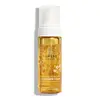What's inside
What's inside
 Benefits
Benefits

 Concerns
Concerns

 Ingredients Side-by-side
Ingredients Side-by-side

Water
Skin ConditioningPentylene Glycol
Skin ConditioningSodium Cocoamphoacetate
CleansingHydrogenated Starch Hydrolysate
HumectantGlycerin
HumectantButylene Glycol
HumectantSodium Laureth Sulfate
CleansingDisodium Cocoyl Glutamate
CleansingPolyglyceryl-2 Caprate
EmulsifyingPolysorbate 20
EmulsifyingCoco-Glucoside
CleansingLevulinic Acid
PerfumingP-Anisic Acid
MaskingSodium Cocoyl Glutamate
CleansingSodium Levulinate
Skin ConditioningSodium Hydroxide
BufferingAloe Barbadensis Leaf Juice Powder
Skin ConditioningCitric Acid
BufferingWater, Pentylene Glycol, Sodium Cocoamphoacetate, Hydrogenated Starch Hydrolysate, Glycerin, Butylene Glycol, Sodium Laureth Sulfate, Disodium Cocoyl Glutamate, Polyglyceryl-2 Caprate, Polysorbate 20, Coco-Glucoside, Levulinic Acid, P-Anisic Acid, Sodium Cocoyl Glutamate, Sodium Levulinate, Sodium Hydroxide, Aloe Barbadensis Leaf Juice Powder, Citric Acid
Water
Skin ConditioningSodium Laureth Sulfate
CleansingGlycerin
HumectantCocamidopropyl Betaine
CleansingPEG-40 Hydrogenated Castor Oil
EmulsifyingPolyglyceryl-10 Laurate
Skin ConditioningPEG-200 Hydrogenated Glyceryl Palmate
CleansingRubus Chamaemorus Fruit Juice Extract
HumectantPanthenol
Skin ConditioningPEG-7 Glyceryl Cocoate
EmulsifyingSodium Benzoate
MaskingSodium PCA
HumectantPropanediol
SolventCitric Acid
BufferingPotassium Sorbate
PreservativeSaccharide Isomerate
HumectantPhenoxyethanol
PreservativeEthylhexylglycerin
Skin ConditioningSodium Citrate
BufferingParfum
MaskingWater, Sodium Laureth Sulfate, Glycerin, Cocamidopropyl Betaine, PEG-40 Hydrogenated Castor Oil, Polyglyceryl-10 Laurate, PEG-200 Hydrogenated Glyceryl Palmate, Rubus Chamaemorus Fruit Juice Extract, Panthenol, PEG-7 Glyceryl Cocoate, Sodium Benzoate, Sodium PCA, Propanediol, Citric Acid, Potassium Sorbate, Saccharide Isomerate, Phenoxyethanol, Ethylhexylglycerin, Sodium Citrate, Parfum
 Reviews
Reviews

Ingredients Explained
These ingredients are found in both products.
Ingredients higher up in an ingredient list are typically present in a larger amount.
Citric Acid is an alpha hydroxy acid (AHA) naturally found in citrus fruits like oranges, lemons, and limes.
Like other AHAs, citric acid can exfoliate skin by breaking down the bonds that hold dead skin cells together. This helps reveal smoother and brighter skin underneath.
However, this exfoliating effect only happens at high concentrations (20%) which can be hard to find in cosmetic products.
Due to this, citric acid is usually included in small amounts as a pH adjuster. This helps keep products slightly more acidic and compatible with skin's natural pH.
In skincare formulas, citric acid can:
While it can provide some skin benefits, research shows lactic acid and glycolic acid are generally more effective and less irritating exfoliants.
Most citric acid used in skincare today is made by fermenting sugars (usually from molasses). This synthetic version is identical to the natural citrus form but easier to stabilize and use in formulations.
Read more about some other popular AHA's here:
Learn more about Citric AcidGlycerin is already naturally found in your skin. It helps moisturize and protect your skin.
A study from 2016 found glycerin to be more effective as a humectant than AHAs and hyaluronic acid.
As a humectant, it helps the skin stay hydrated by pulling moisture to your skin. The low molecular weight of glycerin allows it to pull moisture into the deeper layers of your skin.
Hydrated skin improves your skin barrier; Your skin barrier helps protect against irritants and bacteria.
Glycerin has also been found to have antimicrobial and antiviral properties. Due to these properties, glycerin is often used in wound and burn treatments.
In cosmetics, glycerin is usually derived from plants such as soybean or palm. However, it can also be sourced from animals, such as tallow or animal fat.
This ingredient is organic, colorless, odorless, and non-toxic.
Glycerin is the name for this ingredient in American English. British English uses Glycerol/Glycerine.
Learn more about GlycerinSodium Laureth Sulfate (SLES) is a foaming, cleansing, and emulsifying ingredient. It is created from palm kernel oil or coconut oil. SLES is not the same as sodium lauryl sulfate. It is much milder and less likely to irritate.
SLES helps create foam in personal products. It also prevents ingredients from separating, helping to elongate the shelf life.
Sodium Laureth Sulfate is a type of sulfate. It can be drying. We recommend speaking with a professional about using this ingredient if you have concerns.
Learn more about Sodium Laureth SulfateWater. It's the most common cosmetic ingredient of all. You'll usually see it at the top of ingredient lists, meaning that it makes up the largest part of the product.
So why is it so popular? Water most often acts as a solvent - this means that it helps dissolve other ingredients into the formulation.
You'll also recognize water as that liquid we all need to stay alive. If you see this, drink a glass of water. Stay hydrated!
Learn more about Water